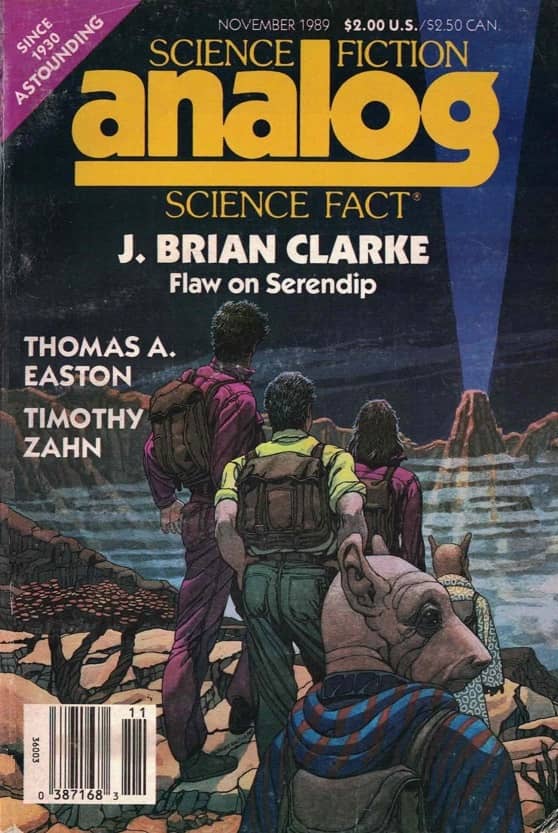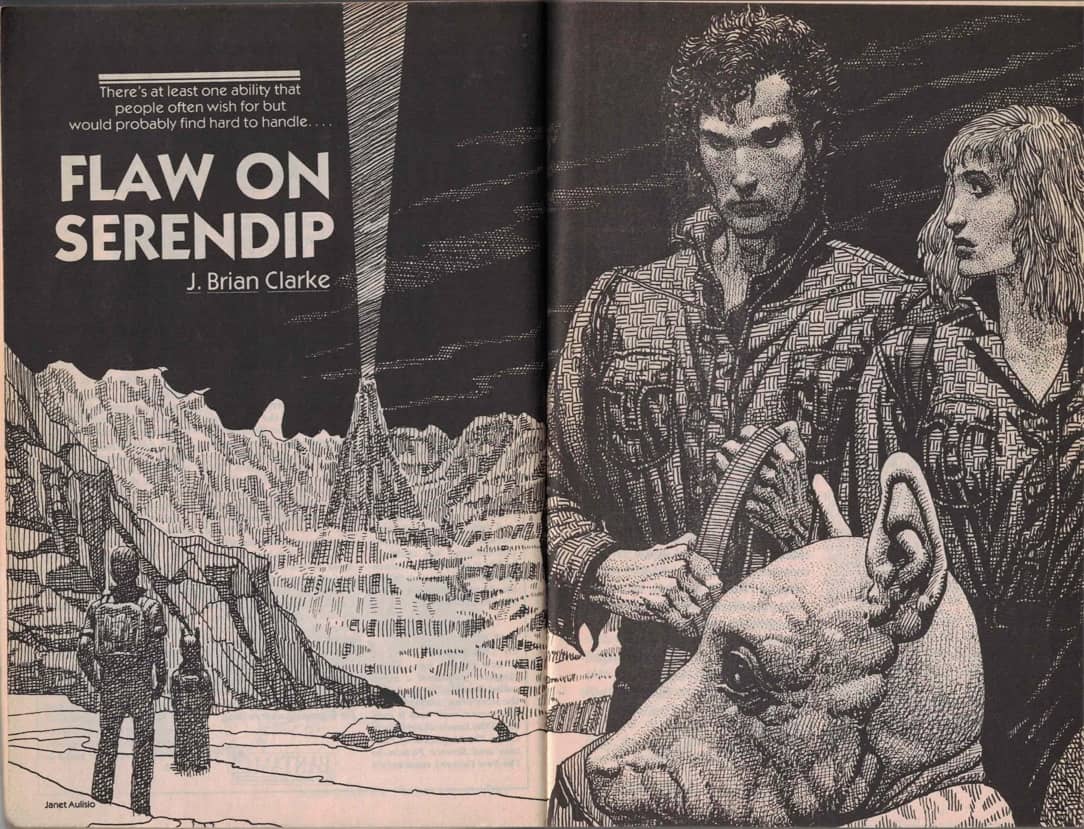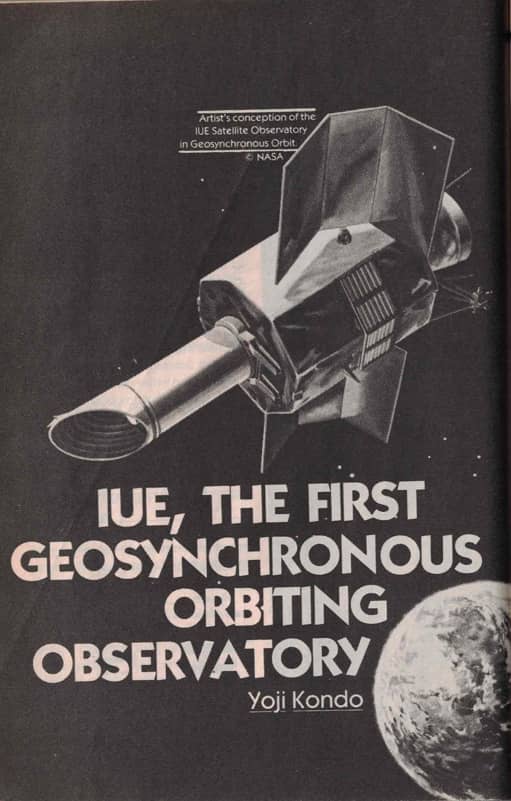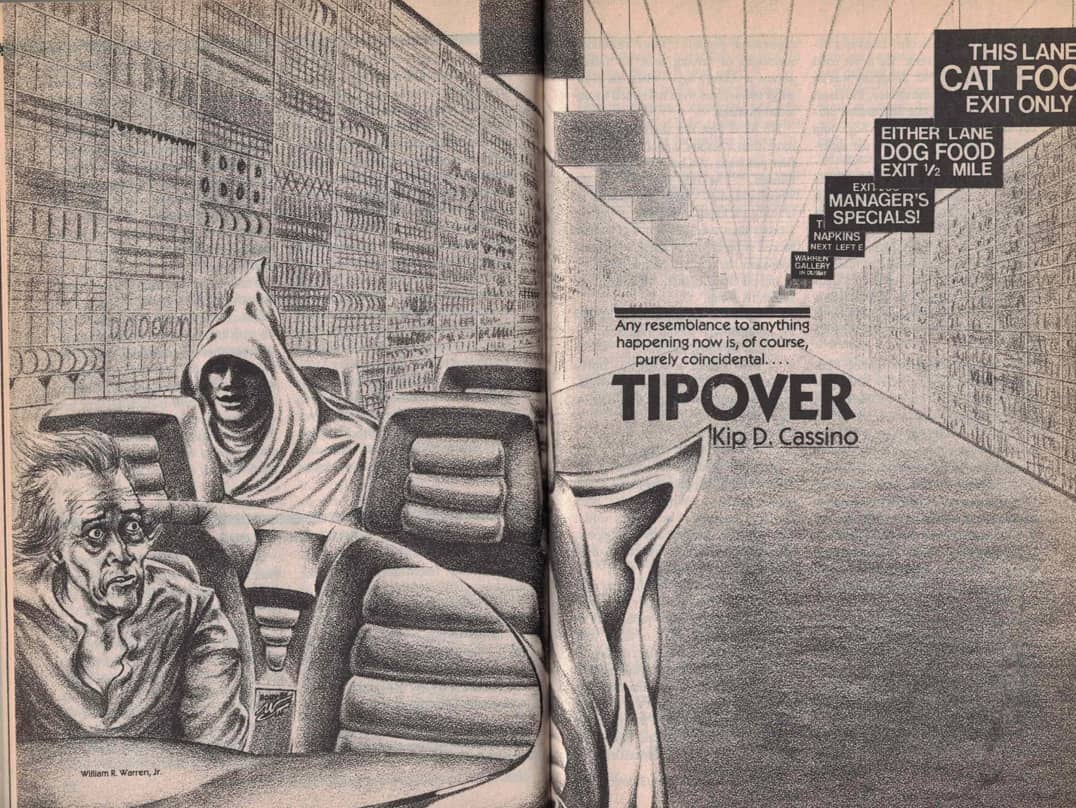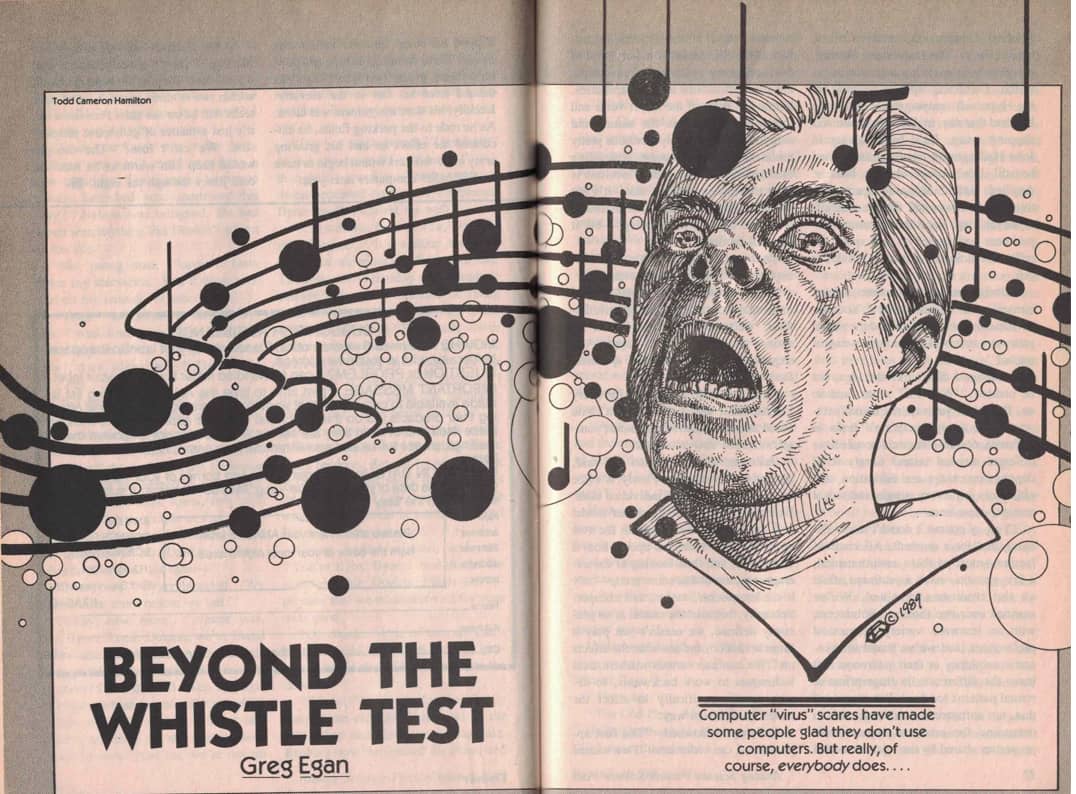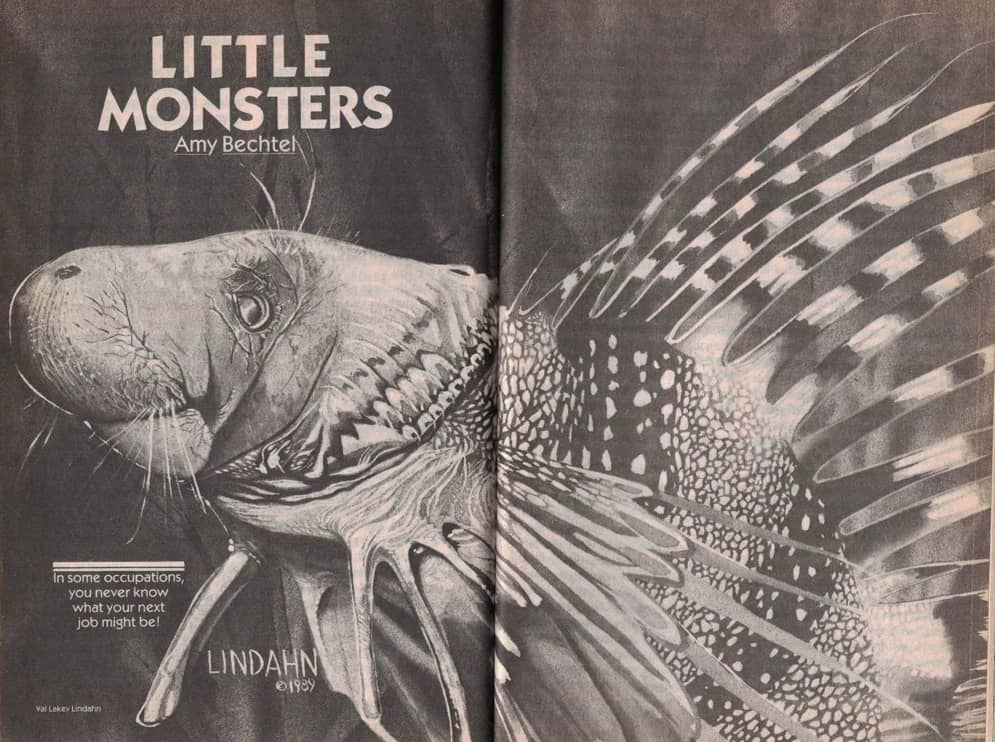Analog Science Fiction and Science Fact, November 1989: A Retro Review
Analog Science Fiction and Science Fact, November 1989. Cover by Janet Aulisio
My quatro-decadal-review system for vintage magazines broke down for a while. What can I say? 2021 was a tough year for everybody! But I’m back in the game with Analog November 1989, which 20-year old me might have enjoyed back in the day. Let’s jump back and jump right in! First off, though, that cover. It really has an 80s look — like those are Members Only jackets they are wearing.Editorial: “Town Meeting” by Stanley Schmidt
Mr. Schmidt stood in at a town meeting regarding expansion of a factory. Anti-expansion groups are opposed to it on the basis of ecological impact (which is technically incorrect, they were opposing it because of estimated human health impact). So the whole thing spins on the shadowy art of Risk Assessment. The problem is with translating chemicals inhaled, and although there are ways to estimate/test just that, it does not come up in the editorial. Did the EPA Regional Screening Levels exist in 1988? I’m not sure. They still aren’t’ that easy to unravel… having to answer the riddles three before you can get a chance at reading the Moon Runes. Still, at the town meeting the RSLs either didn’t exist, or nobody knew about them. Even though Schmidt states that the data is incomplete because we don’t actually expose populations to risk and then test them, we should. Which is exactly what someone who doesn’t understand how hard such a thing would be (and, also, what someone who is NOT in the test population) would say.Fiction: “Flaw on Serendip” by Brian Clarke, art by Janet Aulisio
The planet of Serendip has one major city, Banff, and two intelligent races — humans and the dog-like Phuili. It is also a kind of nature preserve planet. In the world of this story there is a system of ancient alien artifacts, gates/wormholes that humans and Phuili use to traverse the galaxy. One of the human ecologist/explorers on Serendip, Cal Bremmer, is in a bad way — Synesthesia and babbling about the Forbidden Fruit and — crucially — he refuses to tell anyone what happened, or how a man who can barely stand walked the 50 klicks back to Banff. Jason Kurer is called in, an “expedient” on vacation, and his wife, Gia along with human settlement coordinator Jameson DeGrasse, DeGrasse’s Phuili counterpart “Harry” and Cal Bremmer’s counterpart “Klipis.” The five of them go to Cal’s last location and weird stuff begins happening: they get odd powers (telepathy, telekinesis, precognition) that leave as rapidly as they appear. They also confront horrible facts about themselves. Deep down Jason would just as well murder “bad” people. Gia would be mother to the human race ‘because nobody else can do it right,’ Degrasse would prefer a universe without Phuili in it. What the Phuili discover is not stated but whatever it is disturbs them. And, as they get closer to the anomaly, they know they can harness almost god-like powers. They face the ugly realization that they can use their god-like powers to cancel their god-like powers and turn off the anomaly. It is a good story, although it has a few beginner mistake POV shifts, and it was written like the reader should be familiar with Jason and Gia (maybe from other stories).Science Article: IUE; the First Geosynchronous Orbiting Observatory, by Yoji Kondo, artwork provided by NASA
Space telescopes! The International Ultraviolet Explorer (IUE) was the first ultraviolet observatory, launched in 1978. In November 1989, the Hubble telescope is one year away, and the James Web Space Telescope is not even a gleam in some eager engineer’s eye. The IUE was a geosynchronous satellite over its control center at Goddard Space Flight Center — 16 hours controlled from Goddard and 8 hours from Madrid (by the European Space Agency). The IUE tracked comments, monitored volcanic eruptions on Io, interstellar gas and dust (including the fact that the solar system is traversing an amorphous gas cloud 20 light-years across (sadly, not enough to power an interstellar ramjet). Solar magnetic fields, binary stars, galactic nuclei and quasars. Woof! The IUE had an original mission lifetime of 3 years, and it worked until 1996.Fiction: “Tipover” by Kip D. Cassino, art by William R. Warren Jr.
Old man Malcolm Donkin is in a bind, as everything causes cancer, and everything is tracked in his comp. The man can’t even eat without raising his insurance premiums — and the stress of that situation is causing his stress levels to go up and thus his premiums to go up even more. He meets a mysterious stranger at the grocery store who claims to understand his situation. He is introduced to more mysterious strangers, who take him to a secret medical facility, where he is knocked out for a week and then taught ‘Low Stress’ techniques. The doctor looks like Marcus Wellby (and that dates the story quite a bit). The techniques are smashing success! Meanwhile, two insurance adjustor by the names of Nelson and Byner track Donkin down with questions about just how he’s gotten so chill so fast. What, Mr. Donkin, explains these statistical anomalies? They find him doing yoga and other stress-related/lowering activities. Donkin plays it cool, and manages to throw them off the track.“Thousands? Is this some sort of conspiracy?” Although the room was cool, beads of sweat appeared on Nelson’s forehead. Byner backed against a wall. “Calm down, both of you,” the old man laughed. “It’s nothing but your own med algorithms. Check ’em out. The irreversible buildup which leads to tipover assumes a constant or rising level of stress. Not an odd thing in the world we’ve made. Drastically lower stress, reduce consumption, get a little exercise does that sound like the recipe for a conspiracy? Besides, I might be wrong about the numbers. Give an old man a break, will ya?”Donkin is now well integrated into this mysterious group who is using the sound of one hand clapping to stick it to The Man. In fact, he is now the point-man at the grocery store. The medical costs, getting shafted by your insurance company, “mindfulness” and Yoga — all remarkably prescient! 20YOM had little thought or understanding of such things, so probably would not have gotten much out of this.
Fiction: “Beyond the Whistle Test“ by Greg Egan, art by Todd C. Hamilton
Michael Underwood, ad executive at Inspiration Factory, loves classical music, and he hates that he has to use classical music in his ads. Inspiration Factory bright-boy Dr. Halloright has created a ‘general model of neural pathways’ involved in processing music. General, but it works — ad music can be insipid but catchy and Underwood doesn’t have to pillage the classics. Great Success! However, Underwood finds that he can’t stop thinking about the jingles. Worse, as the ads go live it turns out people start having trouble driving, a pilot crashes a plane, singing one of the Inspiration’s jingles as he goes down. Underwood finds he can’t concentrate, can’t keep phone numbers straight, passes out and ends up having to have an operation to cut out the neural pathways. Now the poor guy can’t enjoy music, can’t even understand it. Dayum!Column: Futures, by Matthew J. Costello. Movie reviews! Leviathan, Deep Star Six, They Live
Although Costello doesn’t particularly like Deep Star Six, in its review he references The Abyss which I thought was from the 90s. Oh, the tricks of memory! After criticizing much about the movie Leviathan (which I’ve never seen) Costello recommends it.Because, despite everything I’ve said, it’s fun. All the tricks it borrows and steals, the dripping water in the narrow corridors, the programmed countdown to destruction, the creature mutating and attacking the dwindling crew — it all works, with the same eked of visceral logic of a roller coaster. You may have gone on the ride before, but it’s still fun.He didn’t particularly like They Live, as it somewhat grated against his republican-party leanings, and he thought the fight scenes broke up the action. Ah! Like I’ve said before, it is always great to hear what people thought of ‘classic’ art before it was considered ‘classic’. That said, I watched They Live when it came out in the theater and LOVED it. Honestly, right up there with Big Trouble in Little China as far as movies that far outstripped my expectations. I last saw it on reruns in the early 90s and have intentionally not sought it out for fear it would never live up to my memory.
Fiction: “The Hand That Rocks the Casket“ by Timothy Zahn, art by Gay Freeman
This one is well written, but honestly, very dull. A round of introductions: Dr. Adrian Sommer, co-inventor of the Soulminder, Samuel Alvarez, his tech advisor, some guy named Frank Compton. Honestly, I got 11 pages in and then I moved on, cutting out 30 pages.Column: The Alternate View, Technology Re-Transfer, by G. Harry Stine
Stine, again?! Getting columns in both Amazing Stories and Analog — good work if you can get it. The column is a classic late80s Cold War ramble about how the US of A is getting Russian Migs for combat games (referencing Top Gun). Since Stine has a ‘carry the one’ vibe, he somewhat loses me. As the Eastern Block collapses, Soviet military gear, including planes, are suddenly on the market, with several MiGs showing up with collectors and museums. Sometimes the planes are coming from the USSR itself.Fiction: “Little Monsters” by Amy Bechtel, art by Val Lindahn
Howard Winston lives out in the Arizona desert, and periodically takes exotic animals (turtles, hermit crabs) to Dr. Michael clayton — one night Winston calls the vet and says he’s got a sea monster — a sick one. Winston wants to keep the whole thing secret, “nessie’s” mate has already died. Nessie has babies and Dr. Clayton is going to try to make a formula for them. Overall, I liked it, but the story just ends. There is only a casual nod to exploration of where these creatures come from, down in the unfathomably deep hole/cave system. No exploration of what they are or how they might survive, or what else might be down there.This place is different. It looks like it’s just a pond, maybe spring fed, but it goes down. Down deep. A few months ago I got some new scuba gear and wanted to try it out on my pond. I couldn’t see the bottom — I thought I’d dive and find out how deep it was. Only I never found the bottom… under these hills there’re caverns and chambers full of water, all connected to each other; they must spread out for miles. I found the monster down there. And she followed me when I went back up.20YOM actually worked for various veterinarians through High School, and I would have pulled on the threads.
Fiction: Sparrowhawk (Part II) by Thomas Easton, art by Nicholas Jainschigg
Easton? Again? A second part of three, a strange future world where a lot of machines have been replaced by giant genetically modified animals. Bernie Fischer, detective, has been pulled into a case of a malfunctioning chickadee (a kind of small plane) starts attacking roachsters on the street. At least, I think that was what pulled him in. Wheels within wheels, and various plot threads — not an easy story to follow, and all the wink-wink-nudge-nudge jokes about various gen-engineered creatures, it got to be a bit much. I didn’t interest me enough to invest in Part III. |
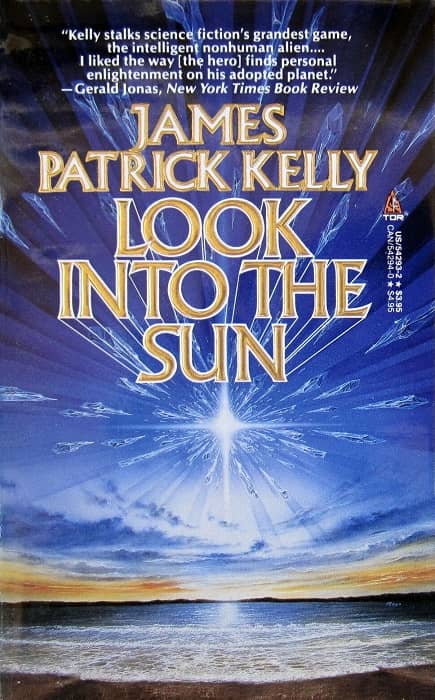 |
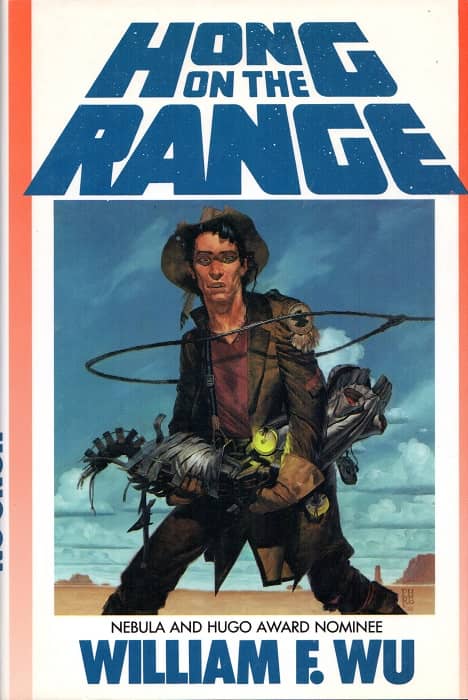 |
Tides of Light (Warner Aspect paperback reprint, 2004, cover by Don Dixon), Look Into the Sun (Tor, 1989, cover by Royo), Hong on the Range (Walker & Co, 1989, cover by Phil Hale)
Column: The Reference Library by Tom Easton
Easton. Again. He reveals one of the trickier aspects of being a book reviewer — that as you hit the convention circuit, you run into the authors whose books you have panned. Case in point, Easton excoriated David Drake’s Cluster Command for glorifying violence; then found himself sitting next to him at Boskone. Awkward! Fortunately, Drake was cool about it. Of course, Drake made the standard argument that his aim in depicting such detailed violence is to warn people away from it. With that out of the way, Easton gets to reviewing:Tides of Light, by Gregory Benford Who’s Afraid of Beowulf?, by Tom Holt Look Into the Sun, by James Patrick Kelly Homegoing, by Frederick Pohl Cyberbooks, by Ben Bova Hong on the Range, by William F. Wu Molecular Ramjet and Other Bedtime Stories, by Larry Carlson The Best of the Nebulas, edited by Ben Bova Future Mind: Artificial Intelligence, by Jerome Clyaton GlennMost of them he doesn’t like, or finds something to not like about them. But it’s pretty hard to tell since he Eastonizes it with a kind of clubby-chubby style, with lots of “Daffy-tollahs, authorial yuck-yucks, you-got-it-folks, and New Age medievaloids” kind of things. Still, the book crop does have some stand-out entries, mostly with Cyberbooks following the rough contours of what will become Kindles and Nooks and various other e-readers, and how difficult it is to mere education and entertainment on the bleeding edge of science with Molecular Ramjet and Other Bedtime Stories.
Letters Column: Brass Tacks
Ah, the letters column! The curated section of letters we see mostly deal with the special hell that is teaching and go through the entire pendulum swing of ‘teachers ain’t got no respect’ to ‘let me tell you the tale of my bad teacher.’ It is sobering to think that 32 years later we seem to still be fighting the same battles. It is also a bit heartening to see Tom Easton get taken to task for a previous review where he mistakenly said that B-29s did not have any kind of central fire computer. Not the case! From one of the flyboys who was there:I feel quite sure that the operation of the central system would be neither digital nor readily recognizable as a computer. This system was, however, believed to be able to track incoming fighters, derive the proper deflection from the observed speed and angle, and lay the guns most accurately.Easton gets called out again by letter writer Taras Wolansky for having a notable bias. “Easton goes on, “there is a Dark Age coming from which the human species may never again emerge. There are plenty of SF stories that ignore or duck the truth.” From which we may conclude, while Analog does not have a “party Line,” Analog’s review column does!” Dr. Stanley Schmidt doesn’t reply directly to the various teacher issues, and, in my view, makes a pretty weak defense of Tom Easton. So after all my big delay I can’t say that Analog, November 1989, really did much for me. Two big stories that I couldn’t get into, a couple of decent tales and some okay science articles. I was a bit alarmed at all the movies that I hadn’t seen, so Leviathan is on my list. I may or may not revisit They Live. That all brings me to confront a nagging suspicion I’ve had regarding both of the 1989 magazines so far– they really haven’t inspired me to seek out books or stories by the authors in their pages. What they have done (or at least what Analog has done) has to remind me of all the varied sci-fi and fantasy movies that were all over the map in the 1980s. For good or bad, the green screen special effects technology of the late 70s was really getting exploited in the 80s and there were a lot of good (and way more not-so-good) sci-fi movies being made. Those movies may have been muscling out the written aspect of sf/f to a certain degree. Certainly, one can see that with the improvement in movies, the explosion of role-playing games, and the introduction of decent computer games that the written side of sf/f found itself beset by able competitors. But we’re only two magazines (out of five, I believe) in. We’ll see what the others bring to the table.
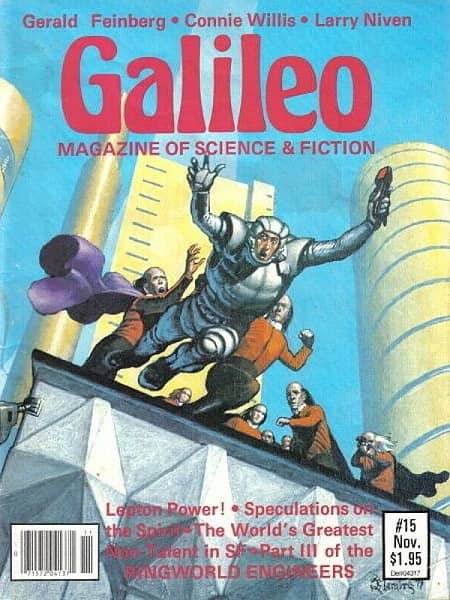 |
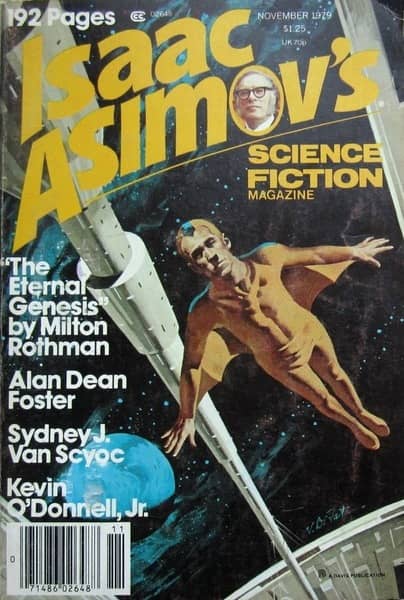 |
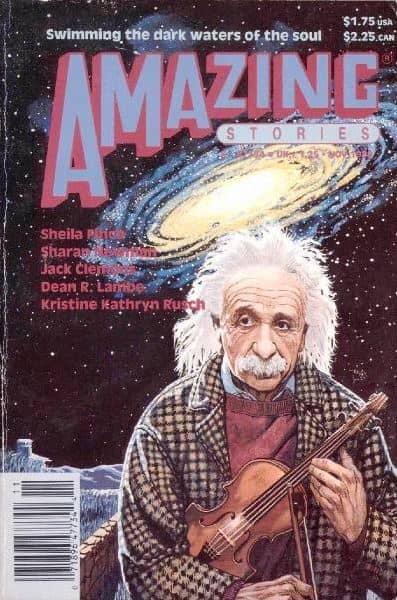 |
Galileo and Isaac Asimov’s Science Fiction, both November 1979. Covers by Larry Blamire and Vincent Di Fate. Amazing, December 1989. Cover by Janet Aulisio
Previous entries the Quatro-Decadal Reviews include:November 1969
Amazing Stories Galaxy Science Fiction, The Magazine of Fantasy & Science Fiction Worlds of If Analog Science Fiction/Science Fact Venture Science Fiction A Decadal Review of Science Fiction from November 1969: Wrap-up
November 1979
Quatro-Decadal Review, November 1979: A Brief Look Back The Magazine of Fantasy & Science Fiction Galileo Magazine of Science & Fiction Analog Science Fiction Science Fact Isaac Asimov’s Science Fiction Amazing Stories Omni A Decadal Review of Science Fiction from 1979: Wrap-up
November 1989
Jump Back! Quatro-Decadal Review, Looking Ahead to November, 1989 Amazing Stories
Adrian Simmons is an editor for Heroic Fantasy Quarterly, check out their Best-of Volume 3 Anthology, or support them on Patreon!
